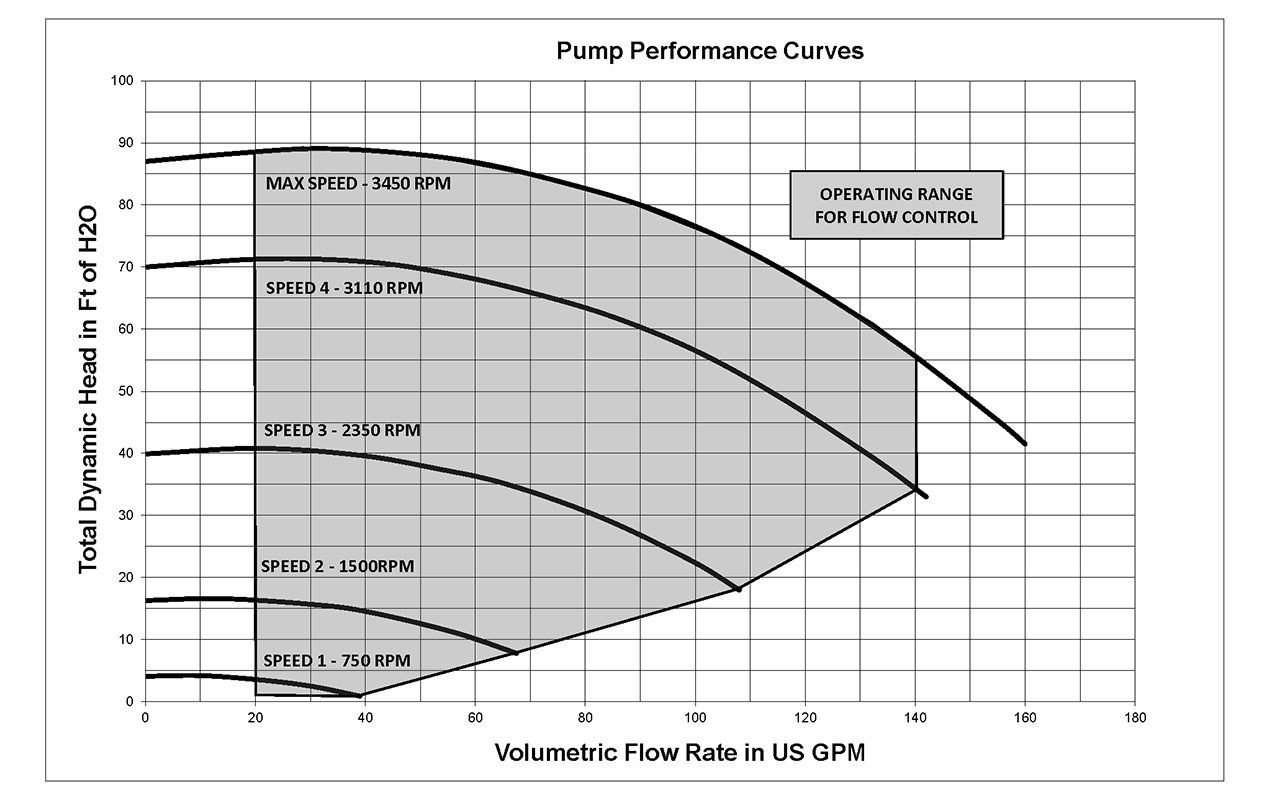Here are the findings that I came up with for what they are worth
... I performed the following tests just to merely satisfy my own curiosity regarding this topic.
1. We used a digital display AC Power Meter to measure the wattage of the IntelliFlo VSF pump at every speed from 500rpm to 3400rpm at 100rpm increments. The power meter we used was found to be extremely accurate when calibrated against a B&K PrecisionTrue RMS Bench Meter. We found that the wattage indicated by the power meter were in most cases, an average of 15% - 20% higher than what was reported by the IntelliFlo pump.
2. I compared the GPM values reported by the pump with the flow rate values reported by the FlowVis Digital. At lower speeds, I found that the GPM values reported by the pump were wildly inaccurate compared to the GPM values reported by the FlowVis Digital. (see note 1)
At pump speeds over approximately 1500 RPM, the flow values reported by FlowVis Digital were approximately 45% higher than that of the flow values reported by the pump.
Note 1: In an attempt to confirm the accuracy of the FlowVis Digital at lower speeds, I performed two bucket tests. In these bucket tests, I configured the return settings to a water feature line with a hose adapter connected. This was the ONLY return line open for the test.
Bucket test #1: I set a pump speed (1300RPM), which would give me the closest value to 10 GPM as reported by the FlowVis digital. It reported a flow rate of 10 GPM. It took 30.25 seconds to fill up to the 5 gallon mark on a 5 gallon bucket.
Bucket test #2. I set a pump speed (2600RPM) which would give me the closest value to 20 GPM as reported by the FlowVis digital. It reported a flow rate of 20 GPM. It took 14.8 seconds to fill up to the 5 gallon mark on a 5 gallon bucket.
Note that the "bucket tests" were the most accurate way that I could actually test the validity of the numbers being reported by the FlowVis digital. The reason for the high RPM values was because the water was being forced at the end through a 3/4" line.
Note 2: I have concluded that the numbers reported by the IntelliFlo pump are calculations
ONLY and are not representative of actual power used or of an accurate flow rate through the plumbing. I believe that the GPM calculations used by the IntelliFlo pump are based on the following equation: GPM=RPM/51 or something similar. It only makes sense, that this equation cannot account for Total Dynamic Head, Filter Loading, Plumbing variations etc.
Note 3: During a discussion that I had with H2flow Controls regarding the accuracy of the FlowVis Digital, I was informed of the following information. (Note that the following is merely "hear-say" and cannot be confirmed). I was told that during a trade show, that Pentair representatives had approached H2flow Controls with a proposal to examine the possibility of a "bundling venture" between the two companies. And that the Pentair reps had admitted that the flow numbers being reported by their pumps were fairly inaccurate because there was no way for the pump to account for "variables" in each plumbing situation. I don't know if this is true but it does give some "food for thought."
The information provided is based on my particular plumbing setup, my particular pump, etc. and should not be considered representative of any other situation.
Conclusions: I make no assumptions or draw any conclusions from these findings except for the following while using the data that I have gathered using my own particular equipment and methods :
- I believe that the reported GPM accuracy of the FlowVis Digital is much better than that of the IntelliFlow pump from what I have witnessed. Especially at lower pump speeds.
- I believe that the accuracy of the power consumption numbers reported by the IntelliFlo pump (although close in many instances (rpm)), are not quite as accurate as one might hope for but it's okay I guess.
r.



 .....
..... .....
.....






